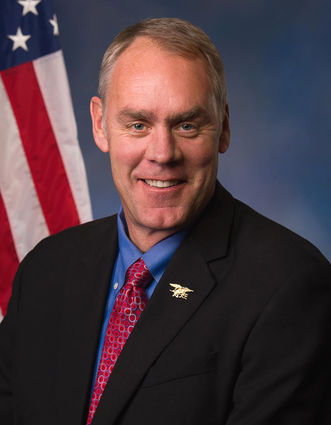EPA maintains "high bar" for Pebble
Federal enviro agency leaves Bristol Bay assessment in play North of 60 Mining News – February 2, 2018
Last updated 9/24/2020 at 6:17pm
The U.S. Environmental Protection Agency's Jan. 26 decision to not lift its proposed restriction on Pebble does not prevent the world-class copper mine project from being thoroughly vetted under federal permitting process.
While EPA has chosen to leave the 2014 pre-permitting restrictions it attempted to impose against Pebble on the table, these limits do not prohibit the permitting process.
A federal judge ordered a stay on the implementation of EPA's proposed determination to restrict Pebble permits before they went into effect and in May of last year the EPA agreed to allow the Pebble Limited Partnership to enter the permitting process unencumbered by the predetermined restrictions.
"The settlement of our litigation with the Environmental Protection Agency announced last May gave us the right to fully participate in a normal, lawful permitting process under the Clean Water Act with a thorough review by the U.S. Army Corps of Engineers," said Pebble Partnership CEO Tom Collier.
EPA affirmed that Pebble is afforded the right to have its proposal vetted by regulators but is sending a message that the proposed plan to develop a mine at Pebble will be held to the highest standards.
"The project proponents continue to enjoy the protection of due process and the right to proceed. However, their permit application must clear a high bar, because EPA believes the risk to Bristol Bay may be unacceptable," the agency penned in a Jan. 26 statement.
Enhanced environmental safeguards
The determination EPA put on the table in 2014 proposed restrictions under Section 404(c) of the federal Clean Water Act aimed at limiting the footprint of any mine allowed to be developed at Pebble.
The proposed determination recommends that any mine allowed to be developed at the Pebble deposit should be restricted to an operation that mines 250 million tons of material over 20 years.
Using this proposed limitation as a guide, Pebble Partnership put forward a project for permitting that was much smaller than previously considered.
This "environmentally optimized" operation proposes to mine 1.2 billion tons of material over 20 years.
"One of the major things we did here was to move where we are going to focus on the pit to a place where there was minimal overburden," Collier said.
This nominal strip-ratio, coupled with the usage of much of the overburden material to build tailings storage embankments and other needed on-site infrastructure, means there is very little waste material that needs to be stored.
"Once that strip-ratio changes, and you don't need places to stack waste rock, it makes a big difference," Collier added.
Among the big differences is the ability to address another major stakeholder concern – keeping the mining infrastructure out of the Upper Talarik Creek drainage, which is noted for its salmon habitat.
"We have listened to our stakeholders, supporters, and skeptics, and are presenting a much smaller mine with enhanced environmental safeguards," Collier said in December.
High but fair bar
Pebble Partnership, however, still must convince stakeholders and the EPA that its plan can be executed in a way that protects the world-class salmon fisheries for which Bristol Bay is renowned.
"We have restored process, reviewed comments, and heard from a variety of stakeholders on whether to withdraw the proposed restrictions in the Bristol Bay watershed," Pruitt said. "Based on that review, it is my judgment at this time that any mining projects in the region likely pose a risk to the abundant natural resources that exist there. Until we know the full extent of that risk, those natural resources and world-class fisheries deserve the utmost protection."
Jason Metrokin, president and CEO, Bristol Bay Native Corp., and Ralph Andersen, president and CEO, Bristol Bay Native Association, said Pruitt's decision does not end the debate on whether Pebble should be developed.
"Nevertheless, the decision will mean that any mine plan PLP (Pebble Limited Partnership) pursues will have to meet a high standard and address the 'unacceptable adverse impacts' identified in the Bristol Bay Watershed Assessment and the proposed determination. This is a high but fair bar and we continue to urge the EPA and other state and federal regulatory and permitting agencies to closely scrutinize PLP's mining proposal to ensure our region's fisheries are adequately protected," the Native leaders said in a joint statement.
The Pebble Partnership accepts the high bar set for developing a mine at its world-class copper deposit and believes it will validate this with regulators and stakeholders during the thorough vetting the mine plan will get over the course of the permitting process.
"We believe we can demonstrate that we can responsibly construct and operate a mine at the Pebble deposit that meets Alaska's high environmental standards. We will also demonstrate that we can successfully operate a mine without compromising the fish and water resources around the project," said Collier. "We look forward to having all of our detailed technical information fairly reviewed by the Corps of Engineers and other participating regulatory agencies through the longstanding, lawful permitting process."


















Reader Comments(0)